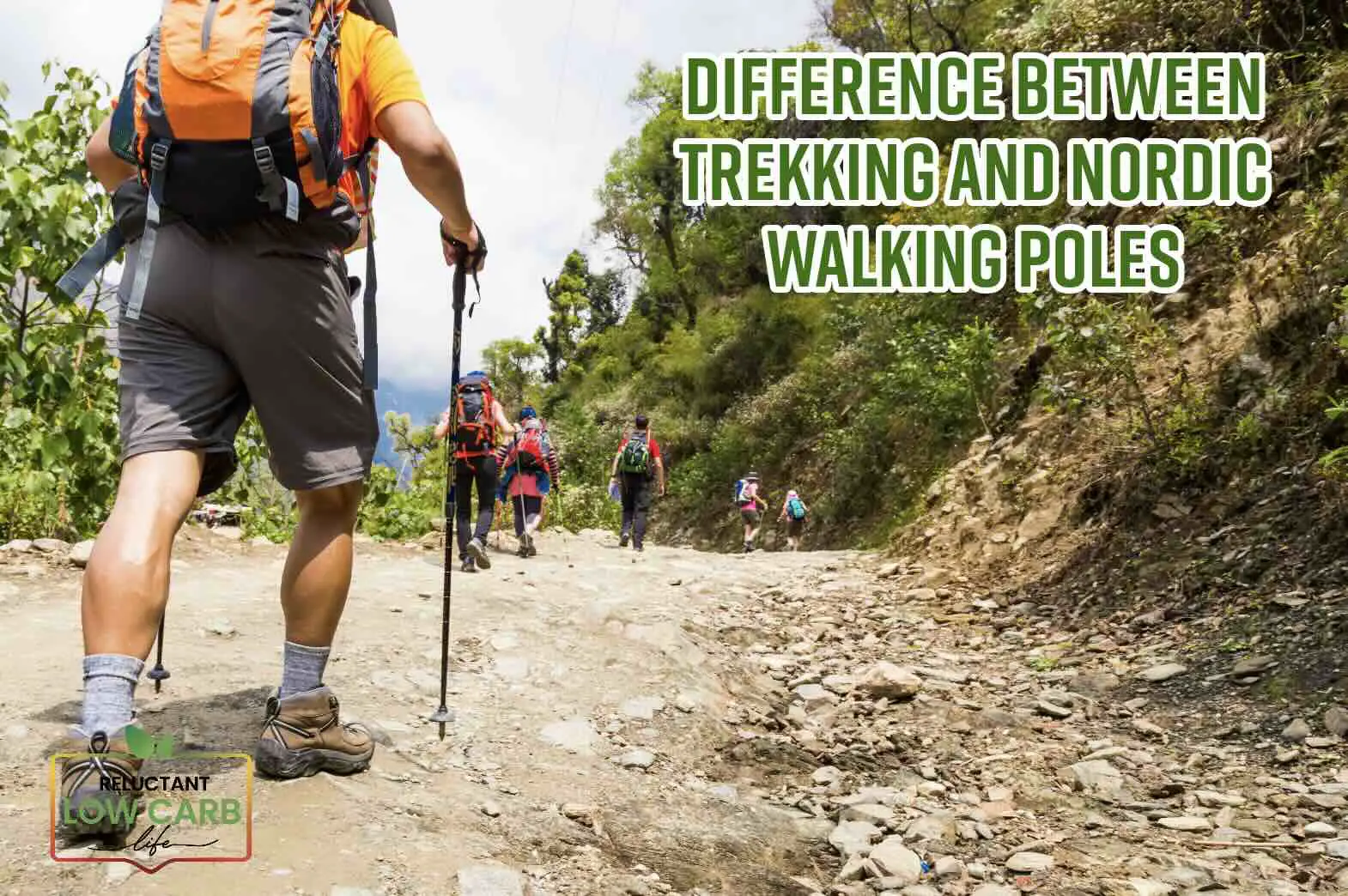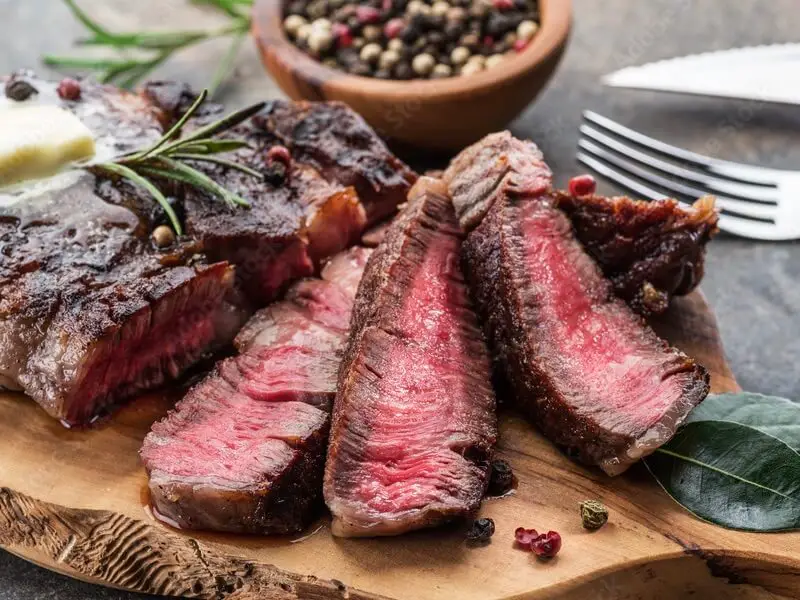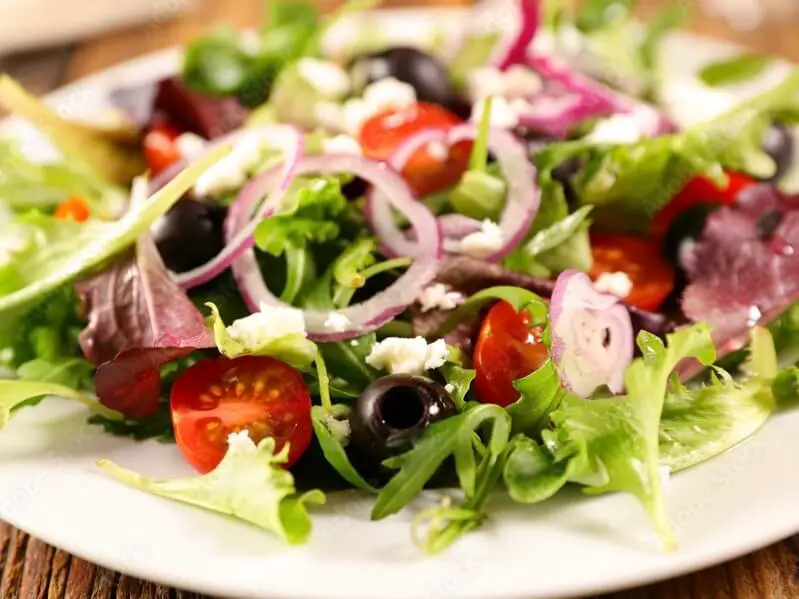When contemplating the distinctions between standard trekking poles and Nordic walking poles, it’s essential to grasp the fundamental differences between these two categories.
Although resembling each other, nordic walking poles and trekking poles serve distinct purposes and are designed with specific variations. In this discussion, we’ll delve into seven critical distinctions between these two types of poles and elucidate why it’s crucial to opt for dedicated Nordic walking poles if you’re embarking on the journey of Nordic walking rather than utilizing trekking poles.
Table of Contents
- Trekking Vs. Nordic Walking Poles: Exploring Seven Key Differences
- 1. Grip Type – Nordic Walking Poles Vs. Trekking Poles
- 2. Grip Material – Nordic Walking Poles And Trekking Poles
- 3. Strap Design – Nordic Walking Poles Vs. Trekking Poles
- 4. Pole Configuration- Nordic Walking Poles Vs. Trekking Poles
- 5. Pole Material – Nordic Walking Poles Vs. Trekking Poles
- 6. Pole Tip Design – Nordic Walking Poles Vs. Trekking Poles
- 7. Shock Absorbers – Nordic Walking Poles Vs. Trekking Poles
- Related Question
Trekking Vs. Nordic Walking Poles: Exploring Seven Key Differences
Regarding walking and hiking activities, having the right equipment can make all the difference in comfort, efficiency, and overall enjoyment. Poles play a significant role in the essential gear for walkers and hikers.
However, not all poles are created equal, and understanding the differences between trekking poles and Nordic walking poles is crucial for selecting the right tool for the right job.

Read on as we will explore seven key differences between these two types of poles and why they matter.
1. Grip Type – Nordic Walking Poles Vs. Trekking Poles
Nordic walking poles are trekking poles made differently, so they have a different type of grip. Here are their differences:
Nordic Walking:
The grip of Nordic walking poles is long and thin, reminiscent of skiing poles. This design allows a single size to fit multiple users, making them more versatile for group activities.
Trekking:
Trekking pole grips are ergonomically shaped, often with finger grooves, to fit the user’s hand as comfortably as possible. This design requires users to try the poles before purchase to ensure a proper fit.
The Importance Of The Grip Differences:
The difference in grip type primarily impacts the user’s comfort and control while using the poles. While Nordic walking poles offer versatility, trekking poles prioritize a personalized fit for better handling during various terrains and activities.
2. Grip Material – Nordic Walking Poles And Trekking Poles
The material used for the grip can significantly affect the quality and price of walking poles. Understanding the grip material is crucial for making an informed decision.
Plastic:
Plastic grips are the most affordable option and are easy to maintain.
Rubbermaid Neoprene:
Grips made of rubber or neoprene offer excellent anti-slip qualities, ensuring a secure hold.
Cork:
The highest-quality walking poles feature genuine cork grips, known for their comfort. However, this quality is reflected in their price.
The Importance:
Grip material influences the comfort of holding the poles and their durability and performance in different weather conditions. Higher-end materials like cork provide a superior grip and comfort.
3. Strap Design – Nordic Walking Poles Vs. Trekking Poles
The Nordic Walking Pole and the Trekking Pole have different strap designs because the two poles have different purposes. Here are their different strap designs:
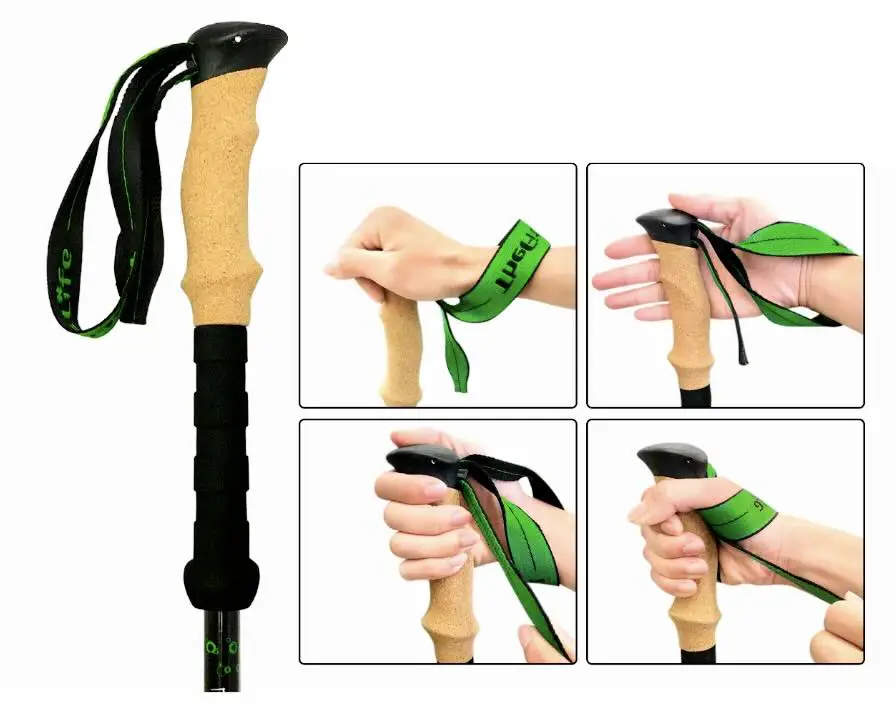
Nordic Walking:
Nordic walking poles often feature a strap design resembling a glove. This design allows users to release their grip on the poles during the backward swing, enhancing the fluidity of the Nordic walking technique.
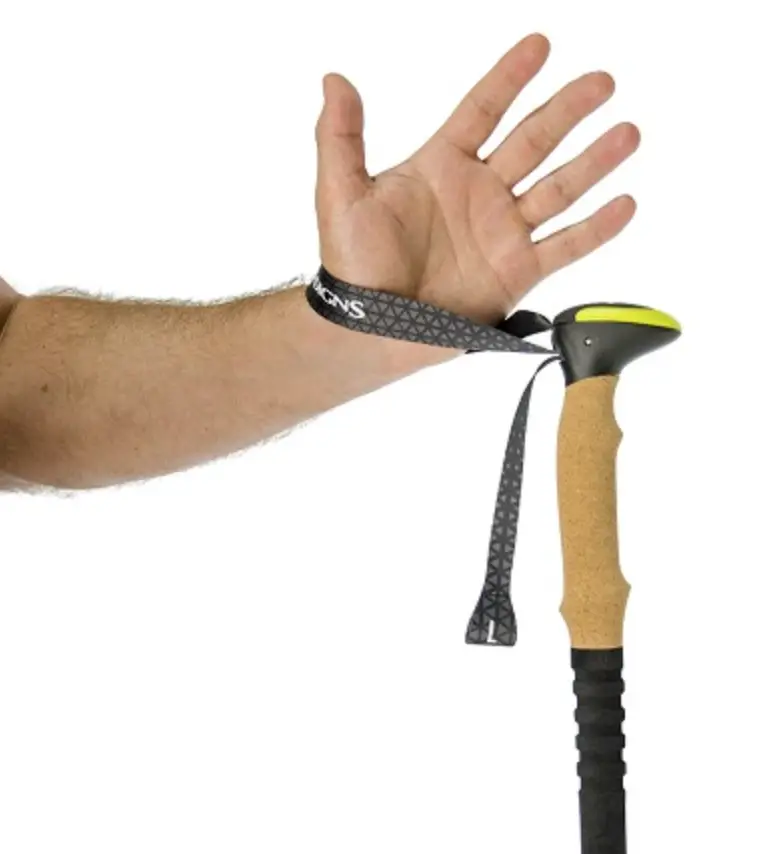
Trekking:
Trekking poles typically have a simple strap that serves as primary support. These straps are designed to keep the poles in constant contact with the user’s hands.
The Importance Of The Strap Design:
The strap design directly impacts how the poles are used during various activities. Nordic walking straps are tailored to the specific movement pattern of this activity, while trekking poles feature more straightforward designs suitable for their purpose.
4. Pole Configuration- Nordic Walking Poles Vs. Trekking Poles
Nordic walking and trekking poles have different pole configurations. There are different reasons why the poles are configured differently:
Nordic Walking:
Nordic walking poles are usually one-piece, although two-piece or three-piece telescopic options are available for easy storage and transportation. Telescopic poles can accommodate users of varying heights.
Trekking:
Almost all trekking poles are telescopic, allowing for adjustable lengths. This adjustability is essential for navigating different terrains, such as shortening the poles for uphill climbs and lengthening them for downhill descents.
The Importance Of Pole Configurations:
Pole configuration affects portability and adaptability to terrain. While one-piece Nordic walking poles offer simplicity and size versatility, telescopic trekking poles are essential for adapting to challenging landscapes.
5. Pole Material – Nordic Walking Poles Vs. Trekking Poles
Understanding the material used in pole construction is vital for choosing suitable poles based on your needs and preferences. Here are some of the most common materials used for these poles:
Aluminium:
Aluminum poles are the heaviest and most affordable option, suitable for casual trekkers who primarily use them for support.
Fiberglass:
Fibreglass poles are lighter and suitable for soft ground. Recreational trekkers often choose them.
Carbon:
Carbon poles come in varying carbon percentages, with higher percentages indicating lighter, more complex, and more shock-absorbent poles. These are ideal for demanding trekkers and users of heavier weights.
The Importance Of The Pole Materials:
Pole material directly impacts weight, durability, and shock absorption. Choosing the suitable material ensures the poles match your activity level and requirements.
6. Pole Tip Design – Nordic Walking Poles Vs. Trekking Poles
The pole tips of the trekking pole and Nordic walking poles are not the same. Here are some differences:
Nordic Walking:
Nordic walking poles have tips that end in “paws” designed for comfortable propulsion. These paws also minimize the typical metal clicking noise associated with trekking poles.
Trekking:
Trekking poles feature metal tips that sink into the ground, providing better propulsion. Some trekking poles also come with round, even-surfaced paws.
The Importance Of The Tip Design:
The tip design of the poles affects your stability, grip, and noise level during use. Nordic walking paws are tailored for comfort while trekking pole tips prioritize stability and grip on various terrains.
7. Shock Absorbers – Nordic Walking Poles Vs. Trekking Poles
Nordic Walking poles and Trekking poles are designed with different shock absorbers. Here are some of the differences:
Nordic Walking:
Nordic walking is a quick and dynamic activity, and using shock absorbers would only decrease the energy required. Therefore, Nordic walking poles do not have shock absorbers and cannot be locked.
Trekking:
Most trekking poles have shock absorbers for changing and often challenging terrains. Poles with shock absorbers are often identified by their name’s “AS” (Anti-Shock) designation.
The Importance Of Shock Absorbers:
Shock absorbers can significantly impact your comfort and joint health during long hikes. Understanding whether you need them depends on your trekking style and the terrain you frequently encounter.

Your specific outdoor activities and preferences should guide the choice between Nordic walking poles and trekking poles. Understanding the seven critical differences highlighted in this guide can help you make an informed decision and select the suitable poles to enhance your walking or hiking experience.
Whether you prioritize comfort, adaptability, or terrain-specific features, choosing the suitable poles will make your outdoor adventures more enjoyable and efficient.
So, the next time you embark on a walking or hiking journey, consider these differences and select the poles that best suit your needs.
Reluctant Low Carb Life explores all aspects of keto and low-carb lifestyle, fitness, health, wellness, and aging gracefully. At the Reluctant Low Carb Life, we strive to give honest and accurate information to people trying to live the low-carb and keto lifestyle while improving their fitness and health.
We have a free monthly newsletter that is filled with information and helps you remain updated. Subscribe to the Reluctant Low Carb Life newsletter by clicking here.
Listen to our weekly podcast, Reluctant Low Carb Life, on all the major podcast platforms by clicking here.
Follow us on Instagram and Facebook by clicking here.
Related Question
Low Carb Vs. Keto Diet Differences Explained
Both keto and low-carb are very similar diets, except keto will limit the carbohydrate intake you can have per day more than a low-carb diet. In other words, you can eat more carbohydrates on a low-carb diet than on a keto diet.
You can read more about Low Carb Vs. Keto Diet Differences Explained by clicking here.
Can You Do Intermediate Fasting Without Keto?
You can do intermediate fasting without doing keto. Throughout the centuries, many religions have practiced some form of fasting. Many cultures and religions use fasting to help improve one’s health or for medicinal purposes.
You can read more about Can You Do Intermediate Fasting Without Keto? by clicking here.
What Is It Like To Be A Sugar Addict?
Being a sugar addict means using sugary foods and drinks for emotional and psychological dependence. You may want to stop eating sugar, but it is just too hard to stop. You may also eat sugar to smooth over any emotions; you may have difficulty passing up any sugar treat you see.
You can read more about What Is It Like To Be A Sugar Addict? by clicking here.

